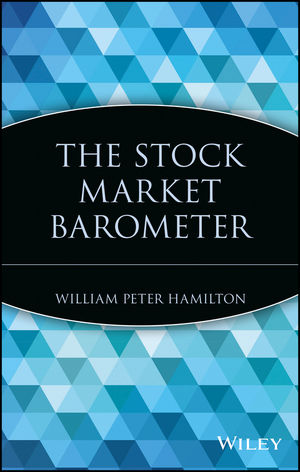The Stock Market BarometerISBN: 978-0-471-24764-7
Paperback
368 pages
March 1998
 This is a Print-on-Demand title. It will be printed specifically to fill your order. Please allow an additional 10-15 days delivery time. The book is not returnable.
|
||||||
A pioneering classic in Dow Theory.
"If you are a serious student of investing, you owe it to yourself to 'go back to the future' and read this book." --Charles B. Carlson, Editor of "Dow Theory Forecast".
The Dow Theory is consistently one of the best strategies for understanding and predicting the stock market, and when it is applied as a method of predictable forecast, it is known as the "barometer." This finance classic offers tips and trends that William Hamilton observed over the years in the market, offering a view of market behavior that remains perpetually current. Hamilton, a contemporary of Charles H. Dow, presents a clear and in-depth discussion of the Dow Theory and its explanation of averages and affinity for predictable cycles of panic and prosperity.
Provides an analysis of the stock market and its history since 1897.
* This book is a springboard upon which current Dow Theory has thrived.
* New foreword by Charles Carlson.
The late William P. Hamilton originally published The Stock Market Barometer in 1922. Hamilton spent a career in financial journalism and became an editor of The Wall Street Journal.
"If you are a serious student of investing, you owe it to yourself to 'go back to the future' and read this book." --Charles B. Carlson, Editor of "Dow Theory Forecast".
The Dow Theory is consistently one of the best strategies for understanding and predicting the stock market, and when it is applied as a method of predictable forecast, it is known as the "barometer." This finance classic offers tips and trends that William Hamilton observed over the years in the market, offering a view of market behavior that remains perpetually current. Hamilton, a contemporary of Charles H. Dow, presents a clear and in-depth discussion of the Dow Theory and its explanation of averages and affinity for predictable cycles of panic and prosperity.
Provides an analysis of the stock market and its history since 1897.
* This book is a springboard upon which current Dow Theory has thrived.
* New foreword by Charles Carlson.
The late William P. Hamilton originally published The Stock Market Barometer in 1922. Hamilton spent a career in financial journalism and became an editor of The Wall Street Journal.



